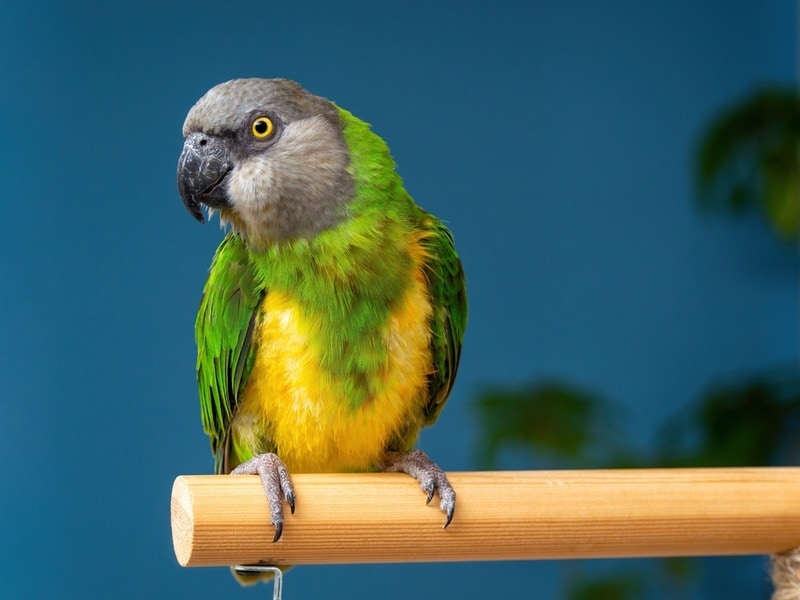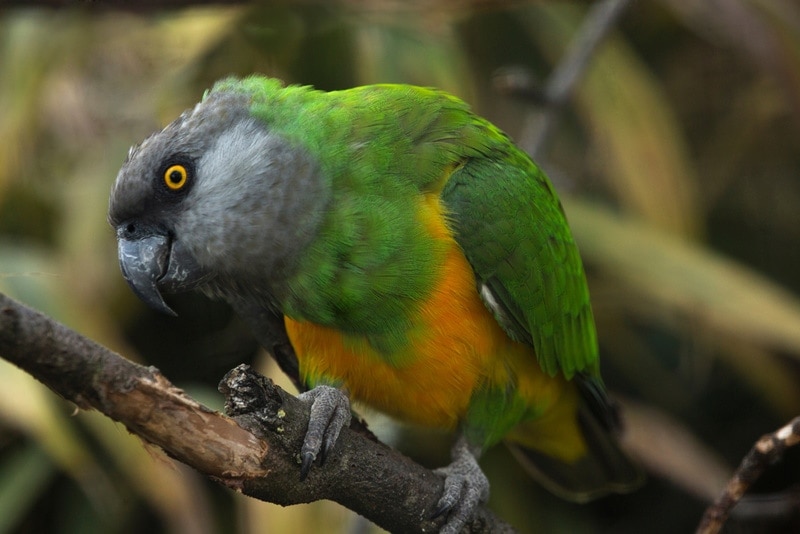How Long Do Senegal Parrots Live: Average Lifespan, Data & Care
Updated on

Click to Skip Ahead
Senegal parrots (Poicephalus senegalus), affectionately known as Sennies, are vibrant and charming birds that will bring joy into your household. Those lucky enough to share their lives with these sweet little parrots should be able to enjoy their adorable antics for at least a few decades, if not longer! With proper care, a balanced diet, plenty of attention and love, a good immune system, and a bit of help from Mother Nature, some Senegal parrots can reach the impressive age of 50! That’s a long time to share with a pet, hence why every prospective owner must carefully consider their decision before bringing a Senegal parrot into their homes.
Senegal Parrot Average Lifespan
Senegal parrots have an average lifespan of 20 to 30 years. Some anecdotal evidence suggests that in captivity, they can live up to 50 years. However, according to the International Species Information System database, the maximum lifespan of Sennies is around 27 years.1 Still, that’s a great deal of time to spend with a feathered friend!

How Long Do Senegal Parrots Live in the Wild?
Senegal parrots come from the open woodlands and savannas of Western Africa. It’s common to see flocks of about 10-20 individuals, as these gregarious birds don’t do well alone.
Life in the wilderness is hard for most species, and Senegal parrots are no exception. On average, these colorful birds can live up to 20 years in the wild. However, many factors, such as predation, habitat loss, food availability, and disease, can significantly impact their survival and longevity.
On a more positive note, Sennies are known for their reproductive success in captivity, making it relatively easy to find captive-bred parrots. In North America, owning Senegal parrots is legal, but regulations may vary in other countries. Responsible parrot guardianship includes ensuring that your parrot is not a wild caught bird.
How to Care For Your Senegal Parrot for a Long Lifespan?
There are several things that you can do to ensure the well-being of your adorable little parrot.
Feeding & Diet
In the wild, Senegal parrots feast mainly on fruits, seeds, grains and leaf buds. But for pet Sennies, you’ll need to feed them a diet consisting of species-appropriate commercial pellets, fresh fruits and veggies, and a few seeds and nuts.
Avoid feeding them only seeds, as this type of diet lacks essential nutrients and can contribute to obesity due to its high-fat content. It is equally important to avoid toxic foods like avocados, onions, garlic, chocolate, candies, table scraps high in fat and salt, and fruit pits containing cyanide (like cherries and apples).

Environment
Senegal parrots are friendly birds that require daily interaction with their human family. Place their enclosure in a central area of the house where people frequent as your parrot will want to interact with the family as much as possible. However, avoid things that could be stressful for your bird such as loud noises or other pets that may be seen as predators.
Care
Due to their small size, Senegal parrots do not need a huge cage. That said, it should be at least 20 x 20 x 28 inches, with gaps between the bars of about ¾ inch. The cage should be more spacious if you are lucky enough to have two birds.
Cleaning
It is essential to clean your parrot’s cage from top to bottom at least once a week. Additionally, remember to thoroughly clean all accessories and toys to rid them of pathogens that may affect your parrot.

Pairing
Since Senegal parrots are gregarious birds, they will do best with a friend. It will contribute to improving their well-being and reduce isolation-related illnesses.
Healthcare
Senegal parrots are hardy birds, but they can be affected by viruses, fungal diseases, and other contagious illnesses that commonly affect pet birds, such as aspergillosis. This fungal disease causes respiratory illness in pet birds by damaging the tissues of the upper and lower respiratory tract. Unfortunately, this condition is difficult to treat, and it can take several weeks before it can be completely eliminated from the parrot’s body, if at all.
The Life Stages of a Senegal Parrot
The life stages of a Senegal parrot are similar to those of many other parrot species.
Hatchling/Chick
This marks the earliest stage in the life of a Senegal parrot, commencing when they hatch from their egg. At this stage, they are entirely reliant on their parents for nourishment and care. Baby Senegal parrots might not be conventionally “cute,” as they appear somewhat peculiar with their oversized, blind, and bulging eyes, pink bodies, and the absence of feathers. The subsequent stage is more captivating and visually appealing.
Fledgling
As the chick matures, they become a fledgling, meaning that they have developed flight feathers and start to leave the nest, though they may still rely on their parents for feeding.
Juvenile
During this stage, the parrot gradually becomes more independent and learns to fly, search for food, and interact with their environment. They may begin to venture out of the nest at around 9 weeks of age, but they are not completely independent until around 12 weeks of age.

Adult
Once the parrot reaches sexual maturity and is capable of breeding, they are considered an adult. A female Senegal parrot is sexually mature at around 2 years old and males around 3 years old, but it may take a few more years before they breed.
Conclusion
Senegal parrots are lovely and affectionate companion birds. If you take good care of them and visit an avian vet regularly for health checkups, your adorable Sennie could spend a few decades by your side and maybe even reach the ripe old age of 50!
Featured Image Credit: AndreyOzhegov, Shutterstock












